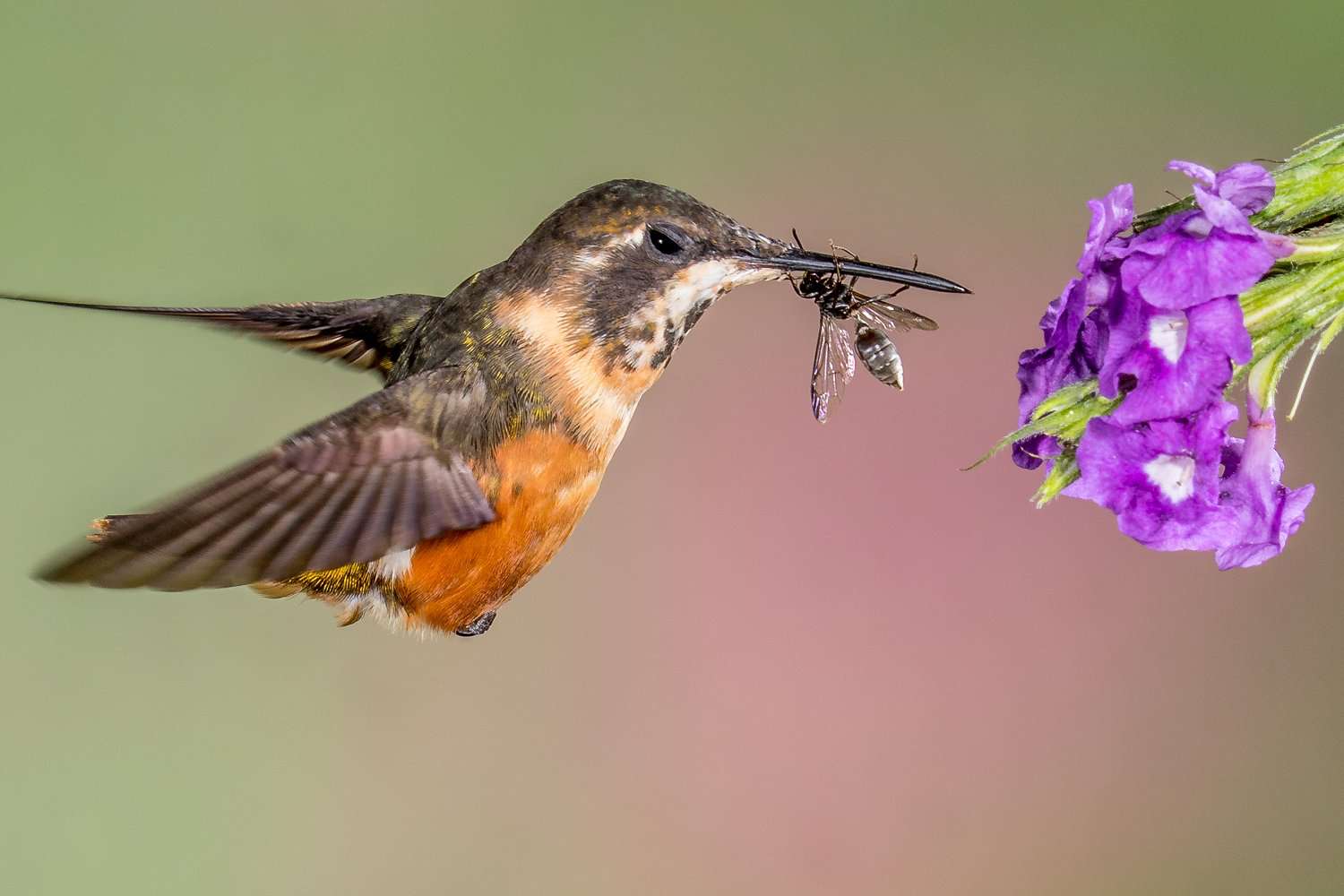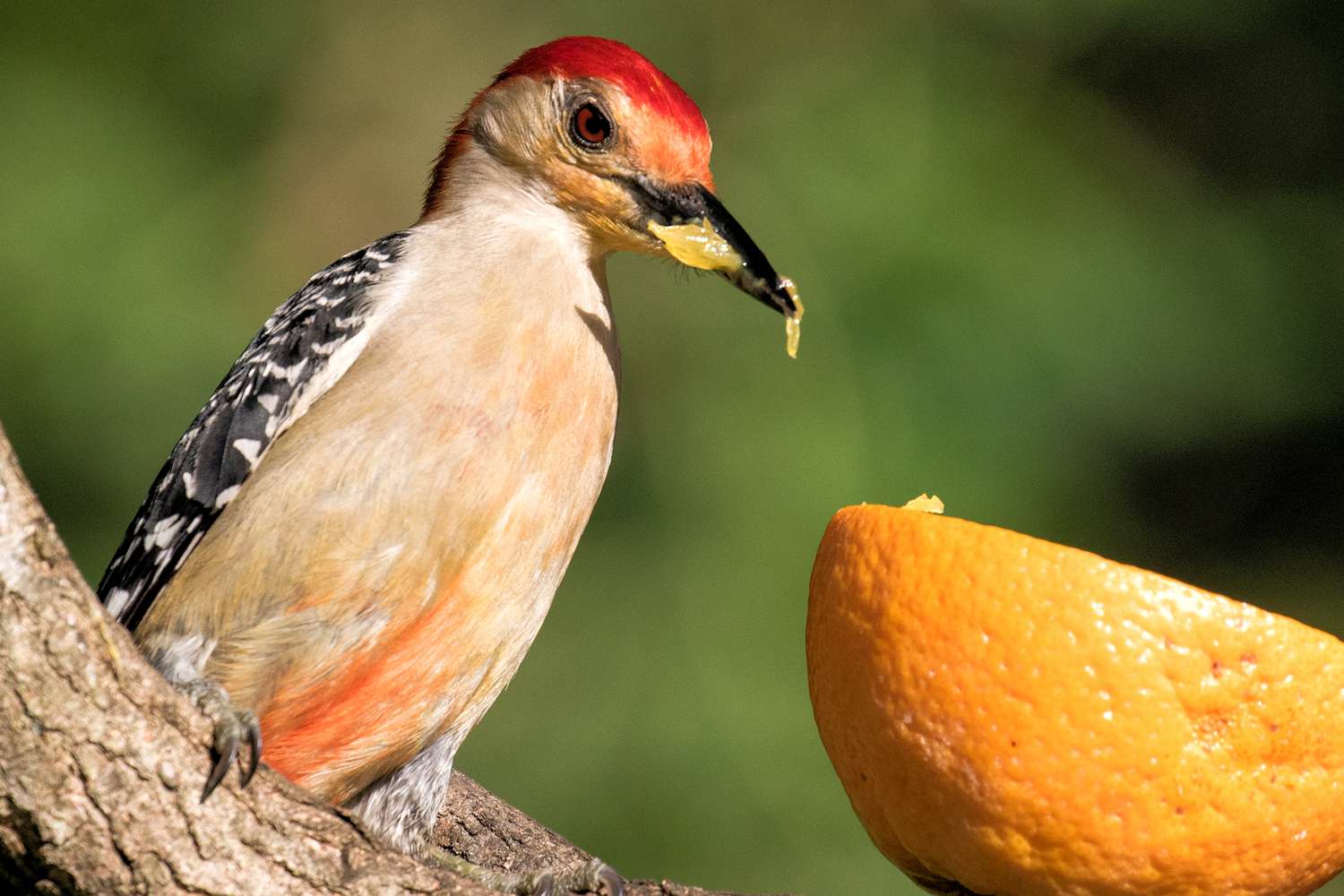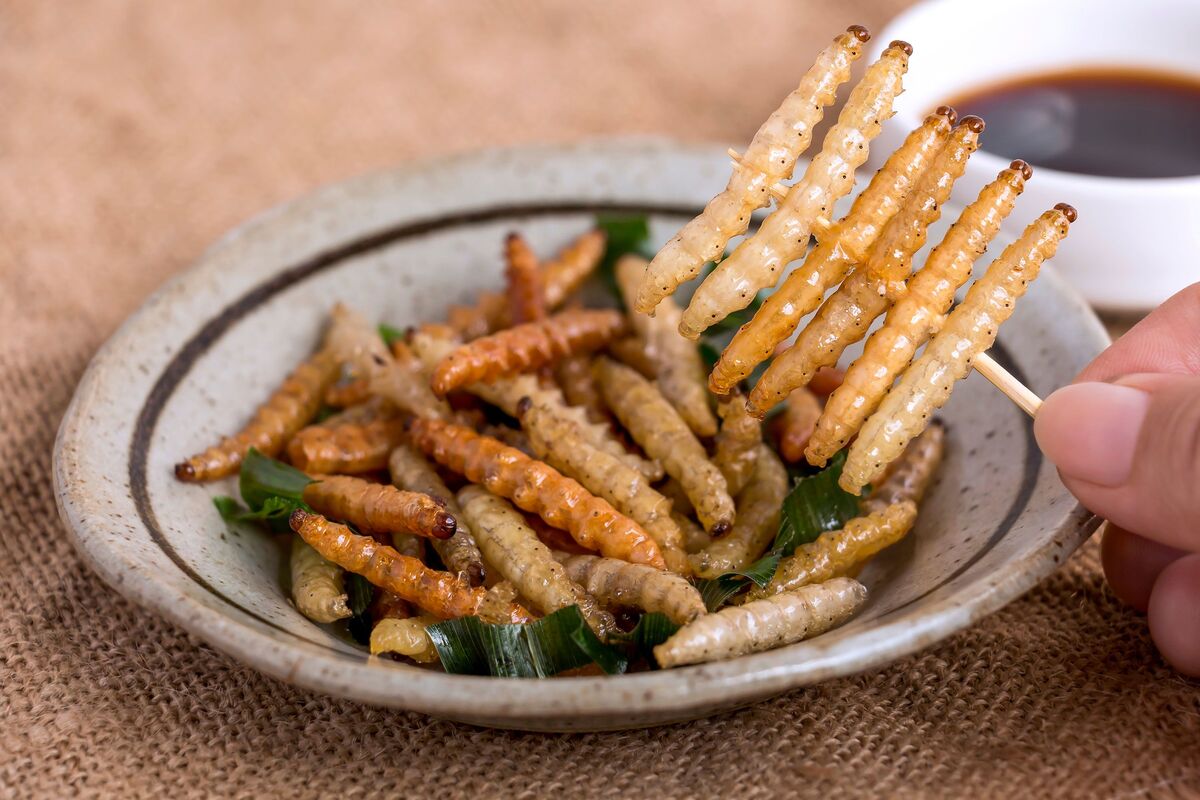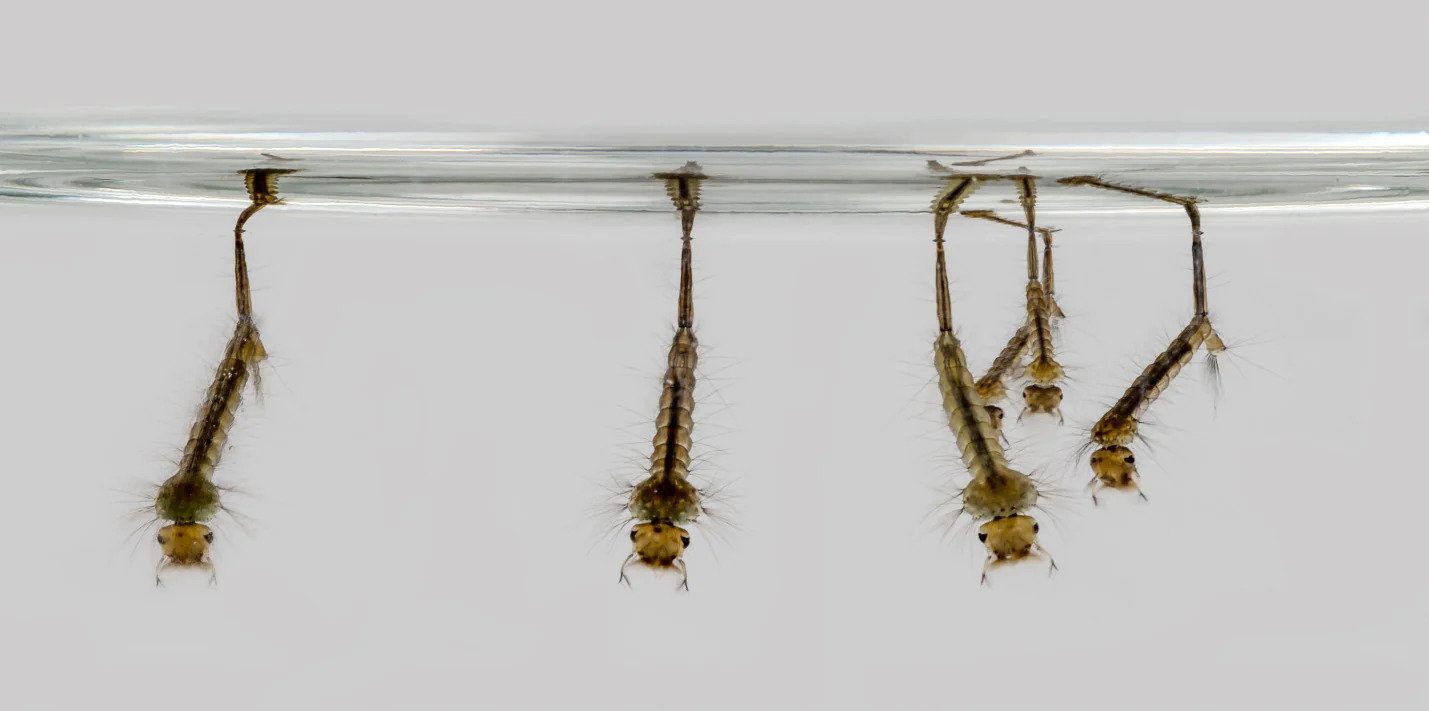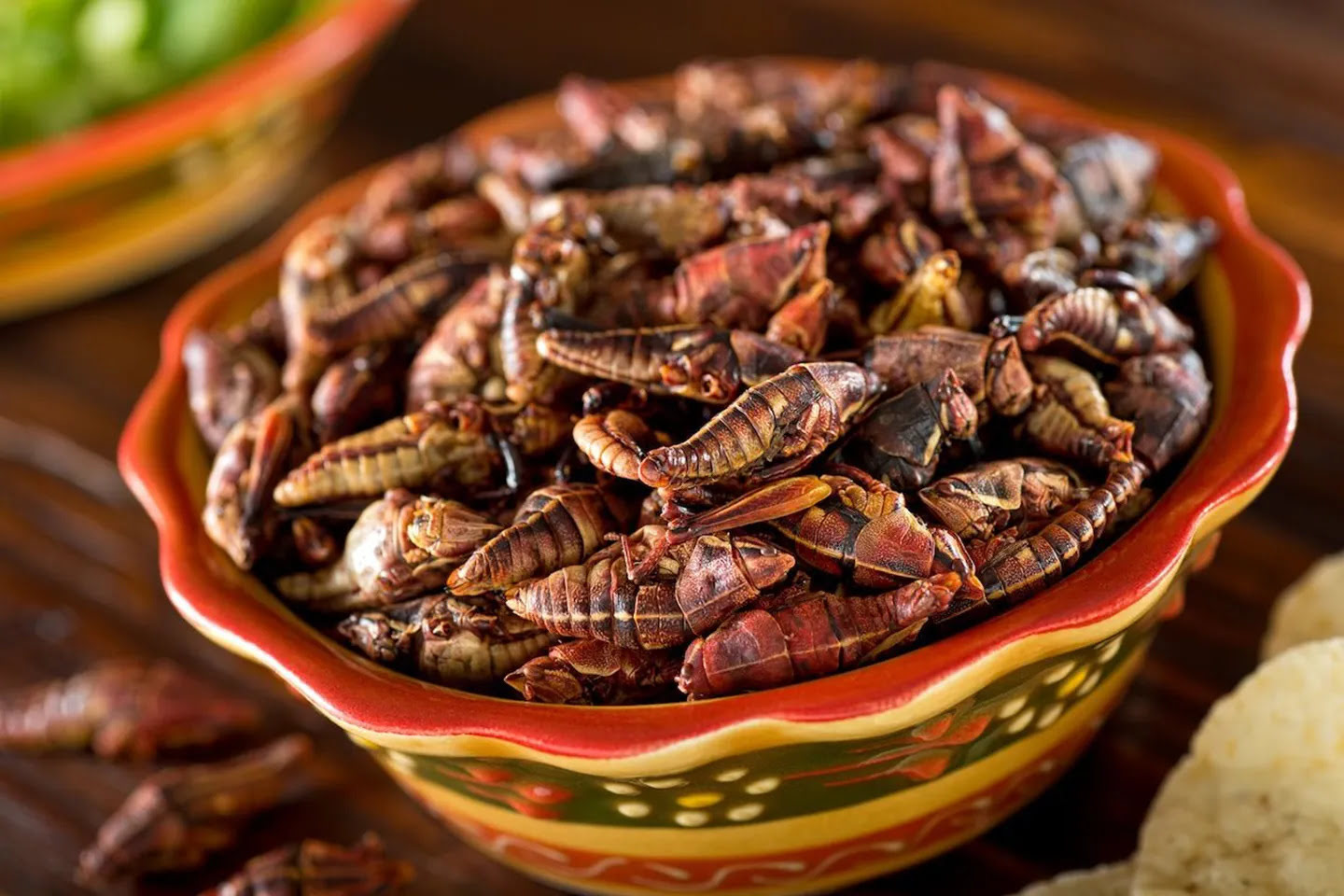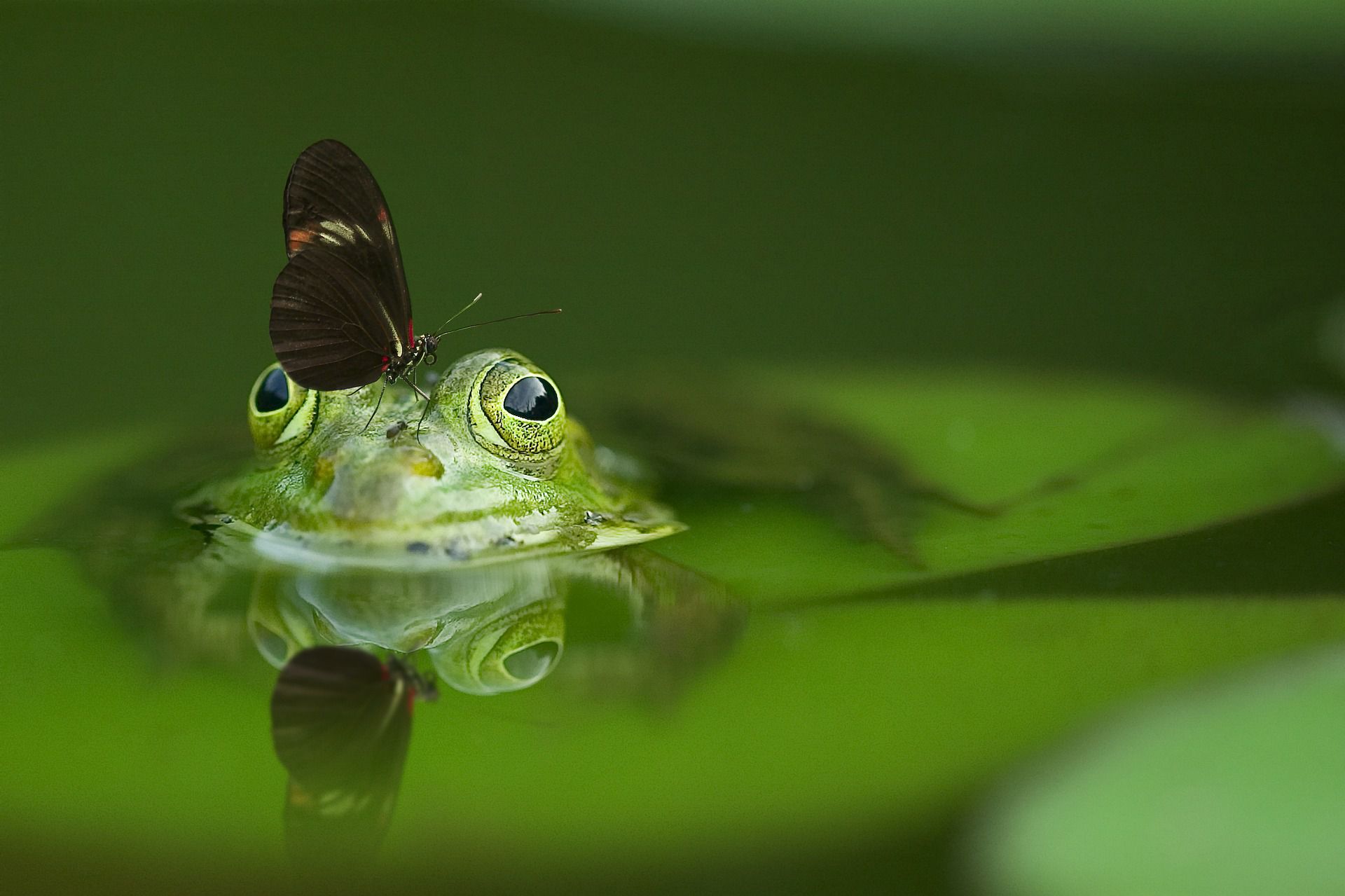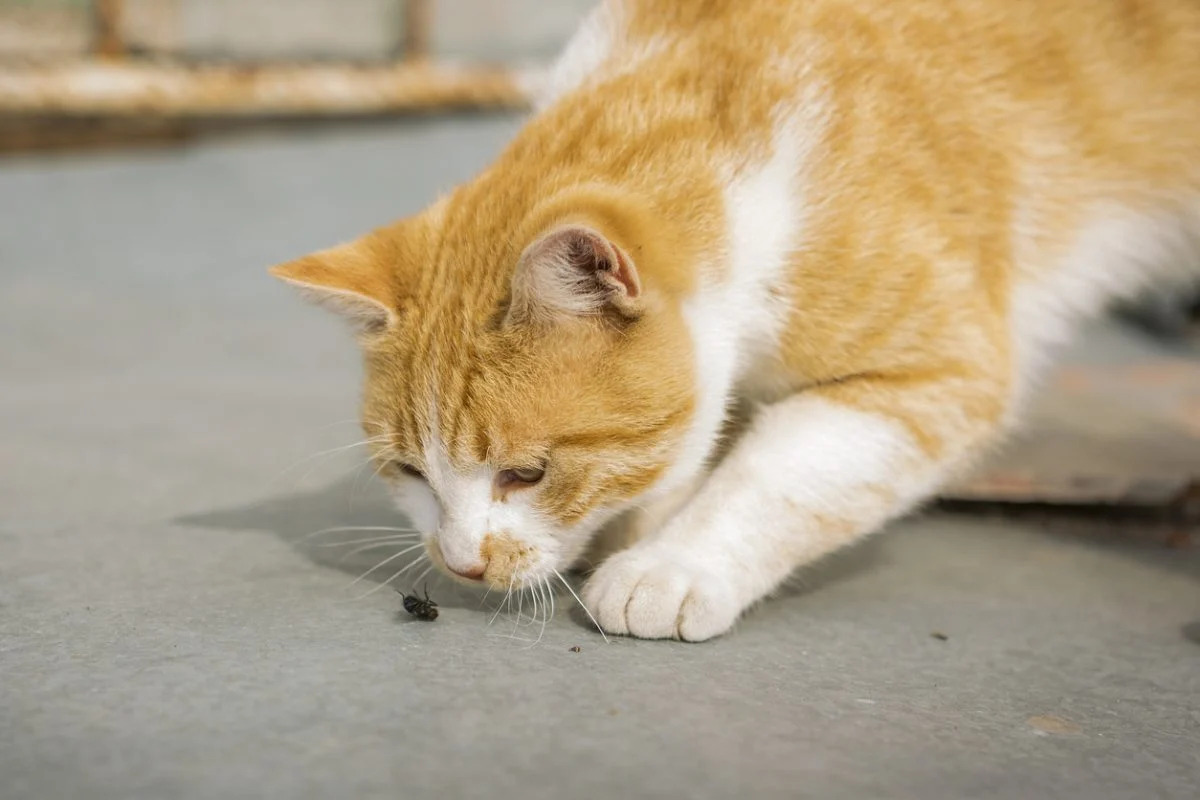Home>Gardening News and Trends>Latest News>How Much Insects Do We Eat A Year
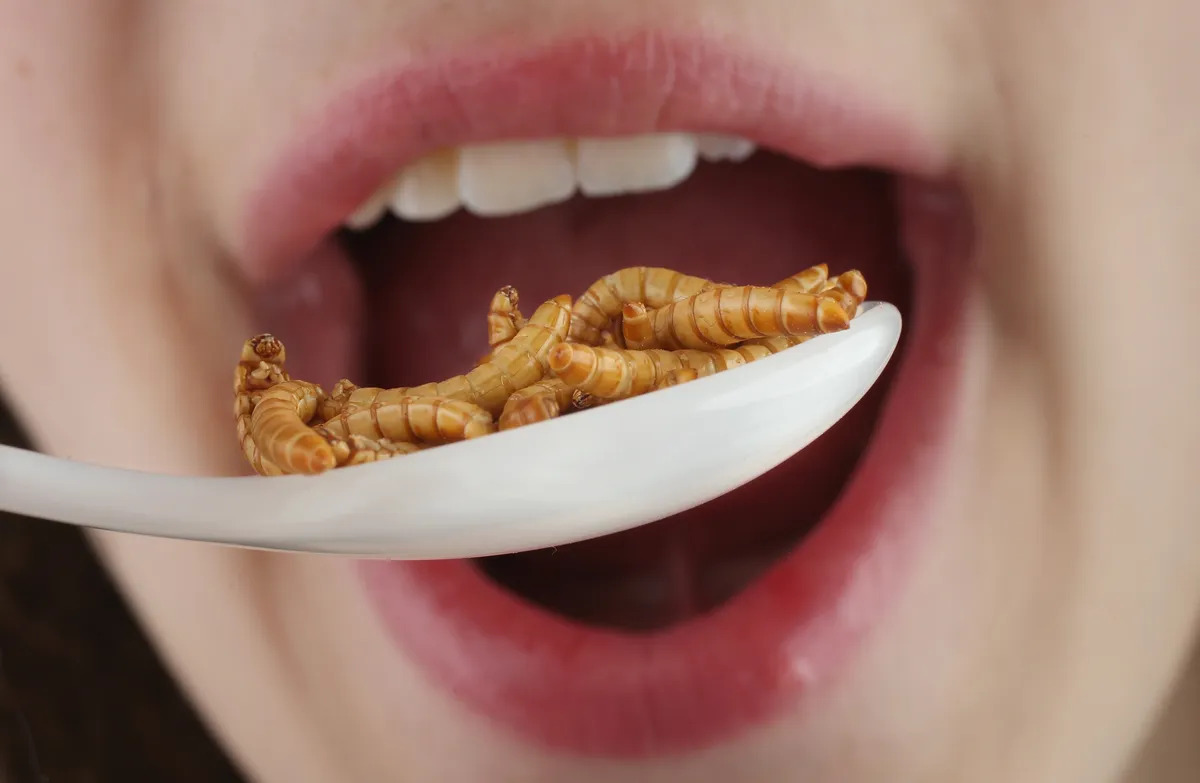

Latest News
How Much Insects Do We Eat A Year
Modified: January 22, 2024
Stay updated with the latest news on how much insects we consume yearly. Learn about the surprising facts and trends in the insect-eating industry.
(Many of the links in this article redirect to a specific reviewed product. Your purchase of these products through affiliate links helps to generate commission for Chicagolandgardening.com, at no extra cost. Learn more)
Table of Contents
- Introduction
- The Global Consumption of Insects
- Insects as a Traditional Food Source
- Insects in Modern Diets
- Insects in Processed Foods
- Insect-Based Food Products
- Nutritional Value of Insects
- The Environmental Impact of Insects as Food
- How Many Insects Do We Eat Annually?
- Regulations and Safety Concerns
- Conclusion
Introduction
Have you ever wondered how many insects you consume in a year? Insects are a common ingredient in many traditional cuisines around the world, and they have been gaining popularity as a sustainable and nutritious food source in recent years. The idea of eating insects may seem strange or even repulsive to some, but it is important to understand the global context and the potential benefits associated with insect consumption.
The practice of eating insects, also known as entomophagy, is not a recent trend. In fact, it dates back thousands of years and is rooted in cultural traditions and the scarcity of other food sources. In many regions, insects have long been recognized as a valuable source of protein, vitamins, and minerals. They have been an integral part of the diets of indigenous populations in Africa, Asia, Latin America, and Australia for generations.
In recent years, the interest in insect consumption has extended beyond traditional cultures and into the mainstream. As concerns about the sustainability of our current food systems have grown, insects have emerged as a potential solution to several global challenges. They are highly efficient at converting feed into protein, requiring significantly less land, water, and feed compared to traditional livestock.
Moreover, insects are incredibly nutritious. They are rich in protein, healthy fats, fiber, vitamins, and minerals, making them a viable option to address malnutrition and food insecurity in many parts of the world. Additionally, insects have a low environmental impact, producing fewer greenhouse gas emissions and requiring less water and feed compared to livestock. This makes them a more sustainable alternative to traditional meat sources.
As insect consumption gains traction, it is essential to delve into the details of how insects are incorporated into our diets and the implications it has on our daily lives. In the following sections, we will explore the global consumption of insects, their role as a traditional food source, their increasing presence in modern diets and processed foods, the nutritional value they offer, and the environmental impact of insects as a food source. Furthermore, we will attempt to answer the intriguing question of how many insects we actually consume in a year.
The Global Consumption of Insects
Insects have been consumed by humans for thousands of years and continue to play an important role in many cultures around the world. While the exact number is difficult to determine, it is estimated that over 2 billion people regularly include insects in their diet. This practice is particularly prevalent in Africa, Asia, and Latin America.
In these regions, insects are often seen as a readily available source of protein and other essential nutrients. They are harvested from natural habitats, farmed, or collected during certain seasons. The most commonly consumed insect species include crickets, mealworms, ants, beetles, grasshoppers, and silkworms.
However, it’s worth noting that the consumption of insects is not limited to developing countries. In recent years, there has been a growing interest in edible insects in Western countries as well. In Europe, for example, the use of insects as food was approved by the European Food Safety Authority in 2015.
While the overall consumption of insects is still relatively low compared to other protein sources, the industry is experiencing significant growth. Insect-based food products, such as protein bars, snacks, and even burgers, are becoming more common on supermarket shelves. The sustainability and nutritional benefits of insects are driving this increased demand.
Furthermore, the growing awareness of the environmental impact of traditional livestock farming has prompted many researchers and policymakers to explore the possibilities of incorporating insects into our diets on a larger scale. Insects require less land, water, and feed compared to traditional livestock, making them a more sustainable protein source for a growing population.
Overall, the global consumption of insects is on the rise. While they may not yet be a staple in every kitchen, the versatility and nutritional value of insects make them an attractive option for those seeking sustainable and nutritious food sources. As more people become aware of these benefits, it is likely that insect consumption will continue to grow in the coming years.
Insects as a Traditional Food Source
Insects have long been a part of traditional cuisines in various parts of the world. For many cultures, they are not only a source of sustenance but also play an important role in their identity and heritage. The history of consuming insects as food dates back thousands of years, and their inclusion in traditional dishes reflects the resourcefulness and adaptability of these societies.
In regions such as Africa, Asia, Latin America, and Australia, insects have been a regular part of the diet for generations. They are often collected from the wild, farmed, or even hunted during specific seasons. Different species of insects are used depending on availability, cultural preferences, and local traditions.
The nutritional value of insects is one of the main reasons why they have become a significant part of traditional diets. Insects are rich in protein, vitamins, minerals, and healthy fats. For communities where other protein sources may be scarce or expensive to obtain, insects provide a valuable and accessible alternative.
Furthermore, insects are often seen as a delicacy and a source of pride for many cultures. They are incorporated into traditional recipes and are often featured in festive and celebratory meals. In some cases, the preparation and consumption of certain insect dishes are deeply connected to cultural rituals and ceremonies.
For example, in parts of Africa, caterpillars are considered a culinary delicacy. They are typically collected during certain seasons and are prepared in various ways, including frying, grilling, or boiling. In Mexico, chapulines (grasshoppers) have been enjoyed for centuries and are commonly used in tacos or served as a crunchy snack.
Insects also offer economic opportunities for communities that rely on insect harvesting or farming. In many cases, the collection and sales of insects provide additional income and contribute to local economies.
While the consumption of insects as a traditional food source has declined in certain areas due to cultural changes and increased access to other foods, the knowledge and appreciation for these practices still exist. In recent years, there has been a renewed interest and recognition of the value of traditional food sources, including insects, as sustainable and nutritious options.
The inclusion of insects in traditional diets serves as a reminder that these tiny creatures have played a vital role in human nutrition and culture for centuries. Insects are not only a source of sustenance but also a reflection of the resourcefulness and adaptability of different societies. Their continued importance in traditional cuisines showcases the diverse and rich culinary heritage that exists around the world.
Insects in Modern Diets
In recent years, insects have been making their way into modern diets as alternative sources of protein and sustainable food options. As the demand for nutritious and environmentally friendly foods grows, insects have gained attention from food enthusiasts, nutritionists, and even renowned chefs.
One of the driving factors behind the inclusion of insects in modern diets is their nutritional value. Insects are packed with essential nutrients, including protein, healthy fats, fiber, vitamins, and minerals. They often contain a complete amino acid profile, making them a high-quality protein source comparable to traditional animal-based proteins.
Additionally, insects are low in saturated fat and cholesterol, making them a healthier option for individuals conscious of their dietary intake. They also offer unique health benefits, with some species rich in antioxidants and antimicrobial properties.
Around the world, restaurants and food companies are experimenting with incorporating insects into their menus and products. This innovation has resulted in a diverse range of insect-based snacks, protein bars, powders, and even insect-based burgers. These products often showcase insects in a processed and familiar format, making them more accessible to a wider consumer market.
Furthermore, insects are versatile ingredients in the culinary world. They can be used in a variety of dishes, providing a unique and flavorful twist to traditional recipes. Insect flour can be incorporated into baked goods, while whole or ground insects can be used in sauces, soups, stir-fries, and even as toppings for salads or pizza.
The growing popularity of insects in modern diets can also be attributed to their sustainability. Insects require significantly fewer resources to produce compared to traditional livestock. They have a smaller ecological footprint, needing less land, water, and feed, and producing fewer greenhouse gas emissions. As the global population continues to grow, finding sustainable food sources becomes increasingly crucial, and insects offer a viable solution.
While insects have made strides in modern diets, it is important to note that their incorporation is still in its early stages. Challenges such as consumer acceptance, cultural perceptions, and regulatory frameworks need to be addressed to facilitate wider adoption. However, the growing interest and innovation in insect-based foods indicate a promising future for these alternative protein sources.
Overall, insects have found a place in modern diets as a sustainable and nutritious option. Their high nutritional value, versatility, and low environmental impact make them a compelling choice for individuals seeking alternative protein sources. As more people become aware of their benefits, we may see insects playing a more significant role in our everyday meals and food choices.
Insects in Processed Foods
The utilization of insects as ingredients in processed foods has gained traction in recent years, with food manufacturers incorporating them into a range of products. Insects provide a sustainable and nutritious alternative to traditional ingredients, offering unique flavor profiles and nutritional benefits.
One of the most common ways insects are incorporated into processed foods is through the use of insect flours or powders. These flours are made by grinding insects into a fine powder, which can then be used as a substitute for conventional flours in baking or cooking. Insect flours can be derived from a variety of insect species, including crickets, mealworms, and black soldier flies.
Insect flours have several advantages for food manufacturers. They are rich in protein, vitamins, and minerals, adding nutritional value to the final product. In addition, they are gluten-free, making them suitable for individuals with gluten sensitivities or celiac disease. Insect flours can be used in a wide range of products, including bread, pasta, cookies, and energy bars, offering consumers a new and innovative option.
Another way insects are used in processed foods is through the incorporation of whole or partially ground insects as visible ingredients. This can be seen in products such as insect snacks, where whole insects like crickets or mealworms are seasoned and packaged as a crunchy and protein-rich snack option.
The use of insects in processed foods goes beyond snacks and baked goods. Insect-based ingredients can also be found in sauces, condiments, and even beverages. For example, cricket protein powder is being used in protein shakes and smoothies, providing a sustainable and alternative source of protein for fitness enthusiasts.
The inclusion of insects in processed foods offers benefits not only in terms of sustainability and nutrition but also in flavor. Different insect species have distinct tastes, textures, and aromas, which can add diversity and uniqueness to food products. Some insects have a nutty flavor, while others offer hints of umami or earthiness, enriching the overall sensory experience of the final product.
However, it is important to note that the incorporation of insects in processed foods is still a relatively new area of exploration, and there are challenges to overcome. Consumer acceptance and awareness are crucial factors for the success of insect-based products. Overcoming cultural perceptions and addressing any concerns related to food safety and allergenicity are also necessary for wider adoption.
Despite these challenges, the use of insects in processed foods is gaining momentum, driven by the desire for sustainable and innovative food options. As more research is conducted and consumer acceptance grows, we can expect to see a wider variety of insect-based products on store shelves, offering consumers a range of choices that are both nutritious and environmentally friendly.
Insect-Based Food Products
Insect-based food products have emerged as a sustainable and innovative alternative in the food industry. These products utilize insects as a primary ingredient, harnessing their nutritional value and environmental benefits. From protein bars to burgers, insect-based food products offer consumers a range of options that are both nutritious and eco-friendly.
One of the most common insect-based products is protein bars. These bars often incorporate insect flours or powders, providing a high protein content while reducing the use of traditional livestock-based proteins. Insect protein bars have gained popularity among fitness enthusiasts and individuals looking for convenient and sustainable on-the-go snacks.
Another notable insect-based food product is burgers. Insect burgers are made by combining minced insects with other ingredients, such as grains, vegetables, and spices. These burgers offer a flavorful and protein-packed alternative to traditional meat burgers, with a significantly reduced environmental impact. Insect-based burgers have gained attention for their sustainability, nutritional value, and potential as a more eco-friendly option for burger lovers.
The use of insects is not limited to bars and burgers. There are also insect-based snacks, such as seasoned and roasted crickets, mealworms, or grasshoppers. These snacks provide a crunchy and protein-rich option for individuals looking for unique and sustainable snack choices.
Furthermore, some companies have ventured into the production of insect-based pasta. Insect flour is incorporated into the pasta dough, creating a protein-rich and environmentally friendly alternative. Insect-based pasta offers a new twist to traditional pasta dishes, providing additional nutritional value without compromising taste.
Ice cream is another area where insects have been explored as an ingredient. Some companies are incorporating insect-based ingredients, such as cricket protein powder, into their ice cream recipes. This not only adds a nutritional boost but also introduces a unique flavor profile to this beloved dessert.
These are just a few examples of the insect-based food products that have entered the market. The diversity of these products showcases the versatility of insects as a viable ingredient in various culinary creations. With continued research and innovation, we can expect to see even more insect-based food products hit the shelves in the future.
While the development and adoption of insect-based food products are still in its early stages, they hold promise as a sustainable and nutritious alternative. The utilization of insects reduces the strain on traditional livestock farming, lowers greenhouse gas emissions, and requires less land and water resources. As consumers become more aware of the environmental and health benefits of these products, the demand for insect-based foods is likely to grow.
However, it is important for companies and regulators to maintain high quality and safety standards when producing and marketing these products. Ensuring proper labeling, allergen information, and adherence to food safety regulations will be crucial for building consumer trust and confidence in insect-based food products.
Overall, insect-based food products represent an exciting and evolving frontier in the culinary world. With their nutritional value, sustainability, and unique flavor profiles, these products offer a glimpse into the future of food that is both delicious and environmentally conscious.
Nutritional Value of Insects
Insects are not only a sustainable food source but also offer an impressive nutritional profile. They are packed with essential nutrients and can provide a wide range of benefits to our diets. From protein to vitamins and minerals, insects offer a valuable source of nutrition.
Protein is one of the key nutrients found in insects. In fact, many insect species are highly protein-rich, surpassing the protein content found in some traditional animal-based foods. For example, crickets can contain up to 69% protein by dry weight, while mealworms can have protein levels of 50-60%. This makes insects a great option for individuals looking to increase their protein intake without relying solely on traditional meat sources.
In addition to protein, insects also offer healthy fats. They are rich in polyunsaturated fatty acids, including omega-3 and omega-6 fatty acids. These fats are important for brain health, cardiovascular function, and overall well-being. Insects, such as black soldier flies and mealworms, have been found to have favorable omega-3 to omega-6 fatty acid ratios, making them a beneficial addition to a balanced diet.
Insects are also a valuable source of vitamins and minerals. They contain essential vitamins such as vitamin B12, which is commonly found in animal-based foods. Vitamin B12 is crucial for the formation of red blood cells and neurological function. Insects are also rich in iron, zinc, calcium, and magnesium, among other minerals, which are essential for various bodily functions including bone health, immune function, and enzyme activity.
Furthermore, insects provide dietary fiber, which is important for maintaining a healthy digestive system and promoting satiety. The fibrous content of insects can help regulate blood sugar levels, prevent constipation, and contribute to a well-balanced diet.
Another noteworthy aspect of insect nutrition is their low environmental impact compared to traditional livestock. Rearing and harvesting insects requires significantly fewer resources, such as land, water, and feed, making them a more sustainable option for providing essential nutrients to a growing population.
While the nutritional value of insects is impressive, it’s important to consider that the exact composition can vary based on the insect species, diet, and life stage. For example, the nutrient profile of crickets may differ from that of mealworms or grasshoppers. Thus, proper processing and quality control should be implemented to ensure consistency and safety in insect-based food products.
In summary, insects offer a wealth of nutritional benefits. They are a rich source of protein, healthy fats, vitamins, minerals, and dietary fiber. Incorporating insects into our diets can provide essential nutrients while also addressing sustainability challenges associated with traditional livestock farming. As more research and development take place, we can expect to further uncover the potential health benefits and nutritional value that insects offer, making them an attractive and sustainable option for feeding the growing global population.
The Environmental Impact of Insects as Food
One of the key advantages of incorporating insects into our diets is their significantly lower environmental impact compared to traditional livestock. Insects require fewer resources and produce fewer greenhouse gas emissions, making them a more sustainable option for addressing the environmental challenges associated with food production.
One of the major environmental benefits of insects is their efficient use of feed. Insects have a high feed conversion rate, meaning they can convert feed into protein more efficiently than traditional livestock. For example, crickets require significantly less feed and water compared to cattle to produce the same amount of protein. This efficiency reduces the strain on agricultural land and minimizes the overall carbon footprint.
Insects also have a smaller ecological footprint than conventional livestock. Rearing insects requires significantly less land and water compared to raising cattle, pigs, or chickens. Some insects, such as mealworms, can even be reared using organic waste materials, contributing to waste reduction and resource recycling.
Additionally, insects generate fewer greenhouse gas emissions. Livestock farming is a major contributor to greenhouse gas emissions, particularly methane. Insects produce considerably lower amounts of methane and ammonia compared to traditional livestock, which helps mitigate climate change impacts.
Furthermore, insects have the potential to address the issue of water scarcity. Traditional livestock farming requires substantial amounts of water for feed production and animal hydration. Insects, on the other hand, have lower water requirements, making them a more sustainable alternative.
By incorporating insects into our diets, we can reduce the overall demand for land, water, and feed. This reduction in resource usage helps alleviate deforestation, water scarcity, and other environmental issues associated with traditional animal agriculture. It also contributes to a more sustainable and resilient food system.
However, it is important to consider the overall sustainability of insect production. Depending on the specific methods and scale of insect farming, environmental impacts like habitat destruction, chemical usage, and waste management can still occur. Careful attention and responsible practices are necessary not to exacerbate environmental issues in the pursuit of insect-based food production.
Nevertheless, the environmental advantages of incorporating insects into our diets are undeniable. As the world’s population continues to grow, finding sustainable food sources that minimize environmental impact is paramount. Insects offer a promising solution, contributing to the goal of a more sustainable and resilient food system for the present and future generations.
How Many Insects Do We Eat Annually?
Determining the exact number of insects consumed annually is a challenging task. However, it is estimated that the average person unintentionally consumes a significant amount of insects each year. Insect fragments and eggs can be found in a variety of food products, ranging from grains and vegetables to processed foods.
One common example of unintentional insect consumption is in grain-based products. Insects are naturally present in grains, and despite rigorous cleaning and processing methods, it is nearly impossible to completely eliminate all insect fragments. The Food and Agriculture Organization (FAO) estimates that up to 5% of grains may be infested with insects.
In addition to unintentional insect consumption, intentional insect consumption is also prevalent in many cultures around the world. As mentioned earlier, over 2 billion people regularly include insects in their diets. Insects are incorporated into traditional recipes, consumed as snacks, or used as ingredients in various dishes.
In countries where insect consumption is more common, such as those in Africa, Asia, and Latin America, the average per capita insect consumption is estimated to range from tens of grams to kilograms per year. Insects such as crickets, mealworms, and various larvae are widely recognized as valuable sources of protein and are included in the daily diets of many individuals.
However, in Western countries, where insect consumption is still relatively novel, the per capita insect consumption is generally lower. But as the interest and acceptance of insects as food grow, this number is expected to increase in the future.
It’s important to note that regulations and cultural preferences play a significant role in determining the availability and popularity of insect-based food products. In some countries, regulations may impose certain restrictions on insects as food, limiting their accessibility and consumption. Consumer acceptance and perception also influence the demand for insect-based food products.
To accurately estimate the precise number of insects consumed annually would require extensive research and data collection on a global scale. Nonetheless, it is evident that insects are already a part of our diet, whether intentionally or unintentionally, and their consumption is likely to increase as they gain recognition for their nutritional value and sustainability.
As the demand for sustainable and alternative protein sources grows, insects offer a promising solution. By embracing their potential, we can not only diversify our diets but also contribute to more sustainable and resilient food systems for the future.
Regulations and Safety Concerns
As the consumption of insects continues to gain popularity, it is essential to consider the regulations and safety concerns associated with insect-based food products. Ensuring the safety and quality of these products is crucial for consumer acceptance and protection.
Regulations surrounding the production and sale of insect-based food products vary across different countries and jurisdictions. Some countries have specific regulations in place to govern the production, processing, labeling, and marketing of insects as food. These regulations may require companies to obtain specific permits or certifications to ensure that the products meet certain safety and quality standards.
One of the central concerns is allergenicity. Insects are known to contain allergenic proteins that can trigger allergic reactions in susceptible individuals. It is crucial for manufacturers to properly label their products to indicate the presence of insects and potential cross-contamination with allergenic substances. This allows consumers to make informed choices and take necessary precautions if they have known allergies.
The presence of pesticides and contaminants is another safety concern. Insects can accumulate toxins, such as heavy metals or pesticides, from their environment. Therefore, it is important for insect-based food products to undergo rigorous testing to ensure that they are free from harmful levels of these substances.
Good hygiene practices and proper processing methods are essential to minimize the risk of microbial contamination. Just like any other food product, insect-based foods should be handled, processed, and stored in a clean and controlled environment to reduce the possibility of foodborne illnesses.
Additionally, ensuring the ethical and sustainable sourcing of insects is a growing concern. It is important to consider the welfare and treatment of the insects throughout their lifecycle, including farming and harvesting methods. Responsible insect farming practices should prioritize the welfare of the insects and minimize environmental impact.
Collaboration between regulatory bodies, industry stakeholders, and scientific experts is necessary to establish comprehensive regulations and guidelines for the safe production and consumption of insect-based food products. This collaboration can help address safety concerns, establish best practices, and provide consumers with confidence in the products they are consuming.
Public education and awareness about the safety and benefits of insect-based food products are equally important. By disseminating accurate information and dispelling misconceptions, consumers can make informed choices and embrace these alternative protein sources.
As the industry continues to evolve, it is crucial to stay up-to-date with the latest regulations and safety standards surrounding insects as food. Adhering to these guidelines will not only ensure consumer safety but also foster the growth and acceptance of insect-based food products as a sustainable and nutritious option.
Conclusion
The consumption of insects as food is gaining recognition as a sustainable and nutritious option. Insects provide an abundant source of protein, healthy fats, vitamins, minerals, and fiber, making them a valuable addition to our diets. They also have a significantly lower environmental impact compared to traditional livestock and require fewer resources for production.
Insects have long been a part of traditional cuisines in various cultures, and their inclusion in modern diets is growing. Food manufacturers are incorporating insects into their products, ranging from protein bars to burgers and snacks, showcasing their versatility and unique flavor profiles.
While insects offer numerous benefits, there are challenges to address. Safety regulations, allergenicity concerns, and ethical sourcing practices need to be addressed to ensure the quality and safety of insect-based food products. Consumer acceptance and awareness also play a role in driving the growth and adoption of insect as a sustainable protein source.
As we move forward, continued research and collaboration among scientists, regulators, and industry stakeholders will be essential to further explore the potential of insects as food. By harnessing their nutritional value, promoting responsible farming practices, and addressing safety concerns, insects can play a crucial role in addressing global food security and environmental sustainability challenges.
Embracing insects as food holds promise for a more resilient and sustainable food system. As individuals, communities, and industries become more open to incorporating insects into our diets, we can contribute to a future where food is not only nutritious and delicious but also minimizes our impact on the planet.
